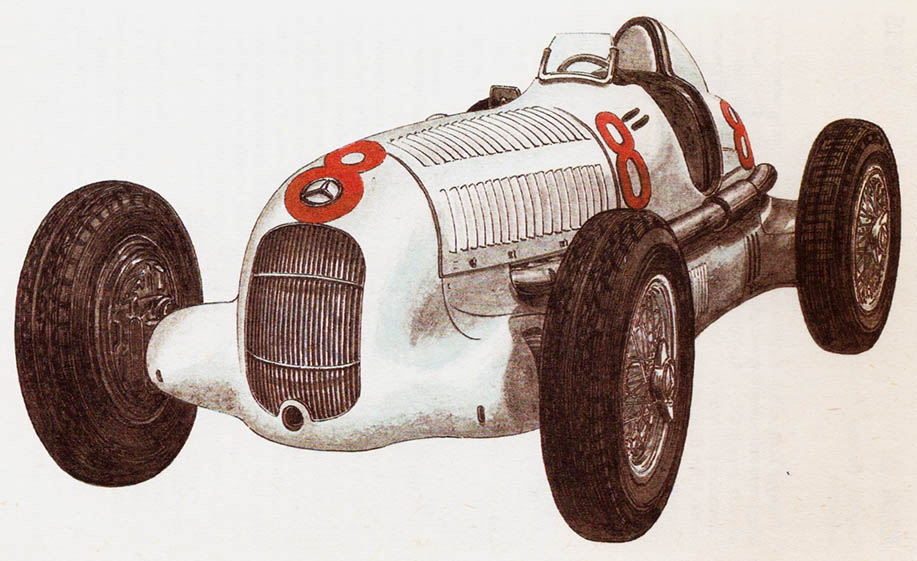MERCEDES-BENZ W 25 – year 1935
Daimler Benz AG, Stuttgart, Germany.
The new model of Mercedes, compliant with the rules of the racing formula in force in the years 1934—1936, was prepared by the chief designer, Dr. Eng. Hansa Nibela, from 1931 year. In February 1933 construction works have started, and the following year the car started the Grand Prix.

Daimler Benz AG, Stuttgart, Germany.
Mercedes-Benz W 25 it was equipped with a modern one, eight-cylinder in-line engine with a displacement 3360 cm3 (0 78 x 88 mm), whose power was increased from 206,1 kW (280 KM) do 260,5 kW (340 KM) in the first model "A” by 5850 RPM. In years 1934-1936 the capacity and power of subsequent models were gradually increasing [AB – 3720 cm3, 302,5 kW (398 KM), model B – 3990 cm3, 316,5 kW (430 KM), C – 4310 cm3, 349,9 kW (455 KM), E – 4740 cm3, 353,3 kW (480 KM)]. From 1935 year, after the death of Hans Nibel, racing cars were designed by Max Sailer, model creator B, C i E. The cylinders had two exhaust valves and two intake valves, driven by two camshafts in the head. A forged crankshaft mounted in five roller bearings drove the camshafts through an arrangement of gears. At the front of the crankshaft there was a bevel gear that powered the Roots compressor. The two carburetors were pressurized 166 kPa. The four-speed gearbox with the differential formed one block located at the rear axle. The wheels were independently suspended, the front wheels were suspended on a trapezoidal wishbone, and transverse spiral springs were fitted in the frame tube. The rear wheels were suspended on oscillating axles with transverse leaf springs. In order to dampen vibrations, friction dampers were used. Hydraulic dual-line brakes acted differently on individual bridges.
Model 25 B was reaching speed 280 km/h. Aerodynamic, the aluminum body was not painted (supposedly to reduce the weight of the vehicle), but only carefully polished to a high gloss.
W 1935 Year, the five-year hegemony of Mercedes cars began on almost all Grand Prix tracks. This year, Rudolf Caracciola became the European Champion after winning the Spanish Grand Prix (164,0 km/h), in Belgium (157,5 km/h), in Switzerland (144,8 km/h), in France (124,6 km/h) and in Tripoli (198,0 km/h).